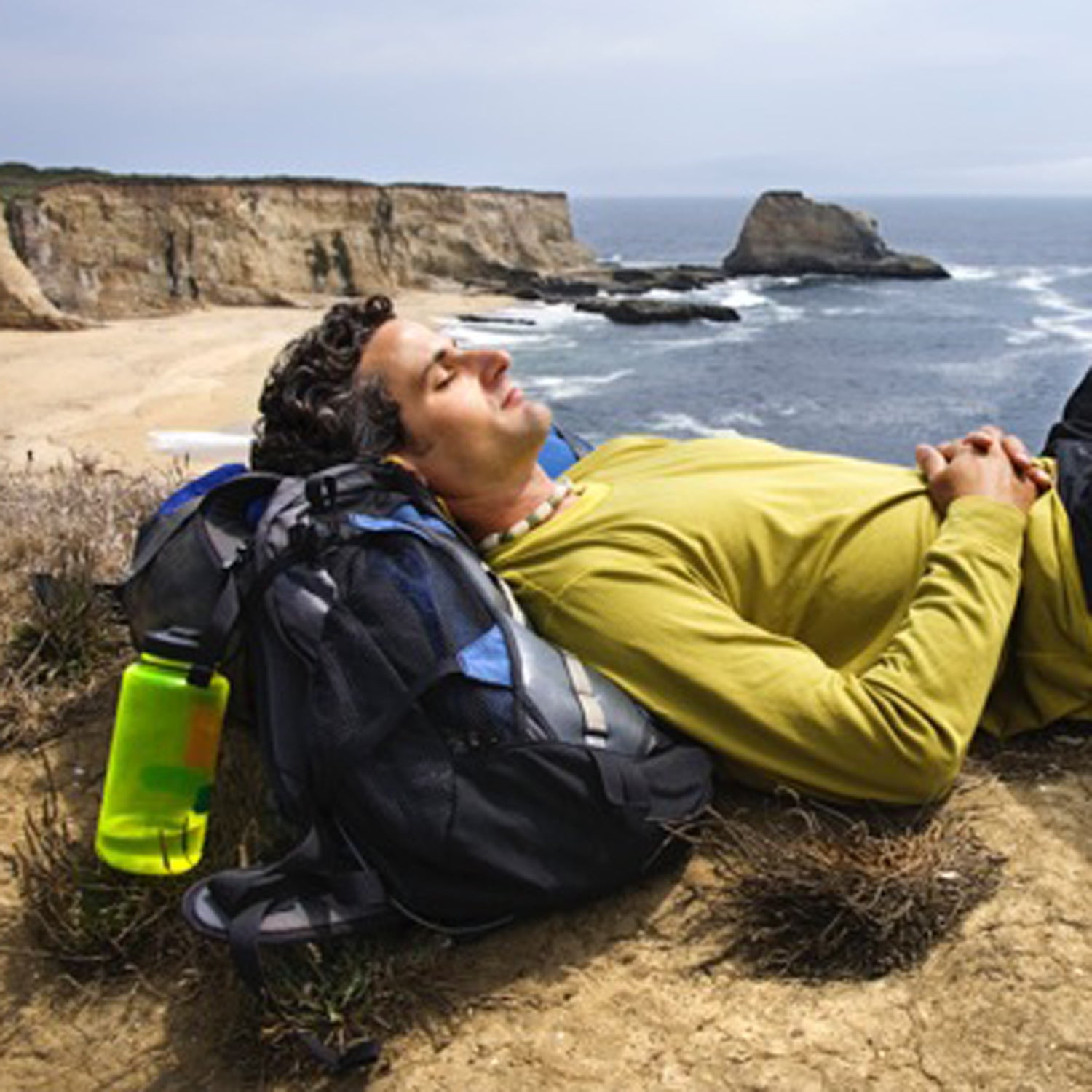A mid-day nap can be a great way to replenish your energy levels, especially when getting out the door for an afternoon run seems downright impossible. It can also be a preemptive tool for avoiding sleepiness later—say, when you get home from work and need to log your miles before dinner.
“I’m a big believer in naps,” says Steven Feinsilver, MD, director of sleep medicine at Mount Sinai Medical Center in New York City. So are lots of pro sports stars, including many , who regularly take siestas on game days.
The secret, though, is in the timing: Nap for too long or close to bedtime and you could have trouble waking back up or getting to sleep later. And there are ways to improve the efficiency of your pre-workout nap. Here’s how to do it right.
Embrace the afternoon slump: “Humans have two peaks of sleepiness,” says Feinsilver. “One is at night and the other is in the afternoon, about 12 hours after the mid-point of your sleep cycle.” If you sleep from 11 to 7, for example, you’ll likely feel tired around 3. “This is the ideal time to take a nap, since you’re going along with your body’s natural flow rather than fighting it.”
Of course, a nap can be helpful at other times of the day you’re feeling sluggish and can sneak away from your desk or other obligations. But be careful napping within five hours of your bedtime, Feinsilver cautions, as this may disrupt your ability to fall asleep later.
Nap in your workout clothes: For a nap to be restorative, it helps to get comfortable. So if you’re planning on exercising immediately afterward, why not change into your shorts and t-shirt before lying down? It’ll be one less obstacle to overcome (in the event your motivation is still flagging) when you wake up.
Stick to 30 minutes: Sleeping for less than 20 minutes will almost certainly leave you wanting more, but sleeping for longer than 45 will trigger sleep inertia, says Feinsilver. “Once you’ve been out for a while, you start to enter deeper sleep and it takes a while to wake up—so if your goal is to get more energy right away, you want to keep it short.” The sweet spot seems to be right around half an hour, most researchers agree. Set an alarm to avoid oversleeping.
Think yourself to sleep: Help your brain enter sleep mode by finding a cool, quiet, and dimly-lit place to rest, says Amit Sood, M.D., professor of psychiatry at the Mayo Clinic. If you’re tired already, you may not need much help drifting off—but if you’re feeling stressed, it can help to have a mental strategy. “Set an intention that you are not going to plan or problem-solve for the next 15 minutes,” says Sood.
Pay attention to your breath and notice it at the tip of your nose, he says, breathing deeply and slowly, and relaxing the muscles around your eyes. “Continue observing your breath, feeling you are relaxing and wait for the sleep to come.”
Consider a ‘coffee nap’: Research shows that drinking a cup of joe immediately before a short nap helps people and when they wake. Feinsilver isn’t crazy about the idea, though: “It doesn’t necessarily take 20 or 30 minutes for caffeine to kick in, and for some people, it can stay in their systems—and affect their sleep—for seven hours or longer.”
But he adds that sleep is often an area of mind over matter. If a habit helps facilitate a healthy sleep routine, and you don’t have trouble falling asleep at night, go for it. “If drinking a nice warm cup of coffee helps you drift off to sleep and the caffeine helps you feel good afterward, then that’s certainly okay.” Keep it to one serving, though: In addition to keeping you up at night, too much caffeine can cause stomach distress during a post-nap workout.
It makes sense that the combo of caffeine and nap improves alertness, says Murray Carpenter, author of . In theory, it should improve your workout, as well. “Certainly caffeine is performance enhancing; most people see a significant athletic improvement from even a moderate dose of caffeine,” he says. “If you want to perform optimally you would be well rested, and optimally caffeinated. If caffeine naps help you do that, I’m sure it’s a good way to go.”
Post-workout works too: But what about the other way around: Is it okay to nap after working out? Trying to snooze immediately afterward may be difficult, says Feinsilver, since vigorous exercise can contribute to insomnia (although recent research shows that’s not always the case). But two to three hours after a morning or early afternoon workout can be perfect for a well-deserved nap, he adds. “That’s the time your core body temperature is declining, which makes you naturally sleepy.”


